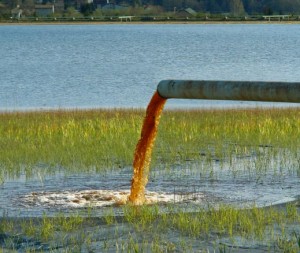 If you live anywhere near a refinery, factory, chemical plant or dump, chances are you are well aware that your water is a toxic and life-threatening substance.
If you live anywhere near a refinery, factory, chemical plant or dump, chances are you are well aware that your water is a toxic and life-threatening substance.
But what about the rest of us, who live in the city or suburbs, far from industrial contamination? Is our drinking water clean and free of contaminants?
More than 2 million synthetic substances are known, over 25,000 are added each year, and over 30,000 are produced on a commercial scale! Only a very tiny fraction are ever tested for toxicity – and a lot of them come to us on the winds and in our water without us knowing.
Even bottled water with fancy labels and advertising, hides behind the fact that it contains highly dangerous toxic chemicals.
We are literally drinking ourselves to death!
Did you know manufacturers and drug makers in the USA legally release hundreds of millions of pounds of pharmaceuticals into rivers and streams, that are then used for our drinking water?
Consumers are big contributors to the contamination too, as millions of people flush unused drugs down the toilet.
And hospitals and long-term care facilities throw away an estimated 250 million pounds of pharmaceuticals and contaminated packaging.
Nearly 40 years ago, Congress enacted the Safe Drinking Water Act and yet today we have more contaminants in our water supply than ever!
- In the summers, half the rivers and streams in America’s “Corn Belt” are laced with pesticides.
- Microbes in tap water may be responsible for 1 in 3 cases of gastrointestinal illness.
- Chlorine (also known as bleach) is the most-widely used disinfectant by water treatment facilities. As it mixes with other substances in municipal water, it produces carcinogens and has been identified as a major contributor to breast cancer.
- Chlorine is a gas at room temperature, and when heated in the shower, the chlorine turns to chloroform, a chemical once used as an anesthesia until it was replaced by less toxic substitute.
